The outcome of the armed conflict in the former SFR Yugoslavia, between 1991 do 2001, is the violent death of 130 000 persons. Over 10 000 are still classified as missing. Serbia’s officials and institutions have, from the beginning of the armed conflict to this day, with very few exceptions, denied the involvement of the SFR and Serbian armed forces in the conflicts in Croatia and Bosnia and Herzegovina. They have also denied the existence of any war crimes on the territory of Serbia in relation to these armed conflicts.
As an antithesis to the practice of forgetting the atrocities of war, the platform ratusrbiji.rs strives to inform and educate about the existence of secret mass graves, concentration camps and torture, murders and persecution of minorities, forced mobilization, paramilitary units’ crimes, as well as the human rights breaches in the Presevo valley between 1991 to 2001. The platform does this through connecting court-determined facts, official data of state and international institutions, testimonies of witnesses, survivors and victims’ families, as well as public information gathered by civil society organizations in Serbia.
The platform ratusrbiji.rs was supported by the Ministry of Foreign Affairs of the Federal Republic of Germany. The content and opinions featured on the ratusrbiji.rs website are those of the Youth Initiative for Human Rights, and may not reflect the official stance of the Ministry for Foreign Affairs of the Federal Republic of Germany.
The armed conflict on the territory of Kosovo in 1998-1999 was fought between the Federal Republic of Yugoslavia (FRY) and Serbia, i.e. the Yugoslav Army (VJ), police and paramilitary units on one side and the Kosovo Liberation Army (KLA) on the other. After the mayhem in Albania in 1997 gave the KLA easier access to weapons[footnote]Under Orders: War Crimes in Kosovo, Human Rights Watch, 2001, p.36
[/footnote], their activities intensified. Between March 5-7 1998, in the village of Prekaz, Serbian police units attacked the compound of Adem Jashari, KLA commander, and other than Jashari himself, killed 58 of his relatives – KLA members, women and children.[footnote]Labinot Leposhtica, “Kosovo Probes Killing of Guerilla Commander and Family”, BIRN, 06 March 2020[/footnote]After the Prekaz massacre, which the international community assessed as the use of unnecessary force, KLA gained broader support of the Albanian population.[footnote]Filip Švarm, “Cena pogrešnih procena i još gorih odluka”, Vreme, 19 August 2010[/footnote]
During the armed conflict of 1998-1999, Serbian forces, by torturing, raping and murdering Albanian civilian population, as well as by destroying property and persecuting Kosovo Albanians, wanted to make a permanent change of the demographic situation in Kosovo. The violence of Serbian forces against the Albanian population was the retaliation of JA and police for KLA attacks[footnote]Under Orders: War Crimes in Kosovo, Human Rights Watch, 2001, p.63[/footnote], while murders served to intimidate the population and encourage Albanians to leave their settlements. Attacks on civilians intensified during the NATO intervention in the period between May 24 and June 10 1999. It is estimated that from the end of March until the beginning of June 1999, around 700,000 Albanians left Kosovo.[footnote]Trial Chamber judgment in the case of Šainović et al. before ICTY, 26 February 2009[/footnote]According to the data of the Humanitarian Law Centre (HLC), in the course of 1998, 1099 civilians, Kosovo Albanians, were killed, while by the end of war, that is, June 20, a total of 5009 Albanian civilians were killed.[footnote]Dossier: The cover-up of evidence of crimes during the war in Kosovo: The Concealment of Bodies Operation, Humanitarian Law Center, Belgrade, 2017, p. 9 [/footnote]
At the same time, the planning of an operation to transfer and conceal the bodies had also begun in March. This operation had to start in April at the latest and continued into May. The Albanians killed by Serbian forces were first buried near the locations in which they were killed and subsequently, when the entry of NATO forces into Kosovo became certain, their bodies were removed and buried in mass graves in Serbia[footnote]Dossier: The cover-up of evidence of crimes during the war in Kosovo: The Concealment of Bodies Operation, Humanitarian Law Center, Belgrade, 2017, p. 9[/footnote], often in locations that belonged to the army and police. Gunshot wounds to the head[footnote]Dossier: The cover-up of evidence of crimes during the war in Kosovo: The Concealment of Bodies Operation, Humanitarian Law Center, Belgrade, 2017, p. 8 [/footnote]show that these were executions, while the concealment of bodies undoubtedly indicates that the planners and executors were well aware that they had committed a war crime.
On the territory of Serbia, four locations containing several mass graves with a total of 941 bodies have been identified so far: Batajnica with 744 bodies, Perućac Lake with 84 bodies, Petrovo Selo with 61 bodies and Rudnica with 52 bodies. The first three mass graves were discovered in 2001 and the last one, Rudnica, in 2013.[footnote]Dossier: The cover-up of evidence of crimes during the war in Kosovo: The Concealment of Bodies Operation, Humanitarian Law Center, Belgrade, 2017, p. 7 [/footnote]
Information about the mass graves first appeared in 2001 in a local magazine called Timočka krimi revija. There, Dragoljub Vitomirović, who was later killed in a car accident, published an article titled Fifty Bodies in a Refrigerated Truck – State Secret. The article gives a confession of a local diver Živadin Đorđević and states that the police, public prosecutors and investigating judges were immediately notified of the discovery of the refrigerated truck, as well as the highest levels of the Interior Ministry, after which the case was declared a state secret.[footnote]Dragan Vitomirović, “Pedeset leša u hladnjači – državna tajna”, Timočka krimi revija, 1 May 2001, evidence no. P00365 in the Đorđević case before ICTY[/footnote]
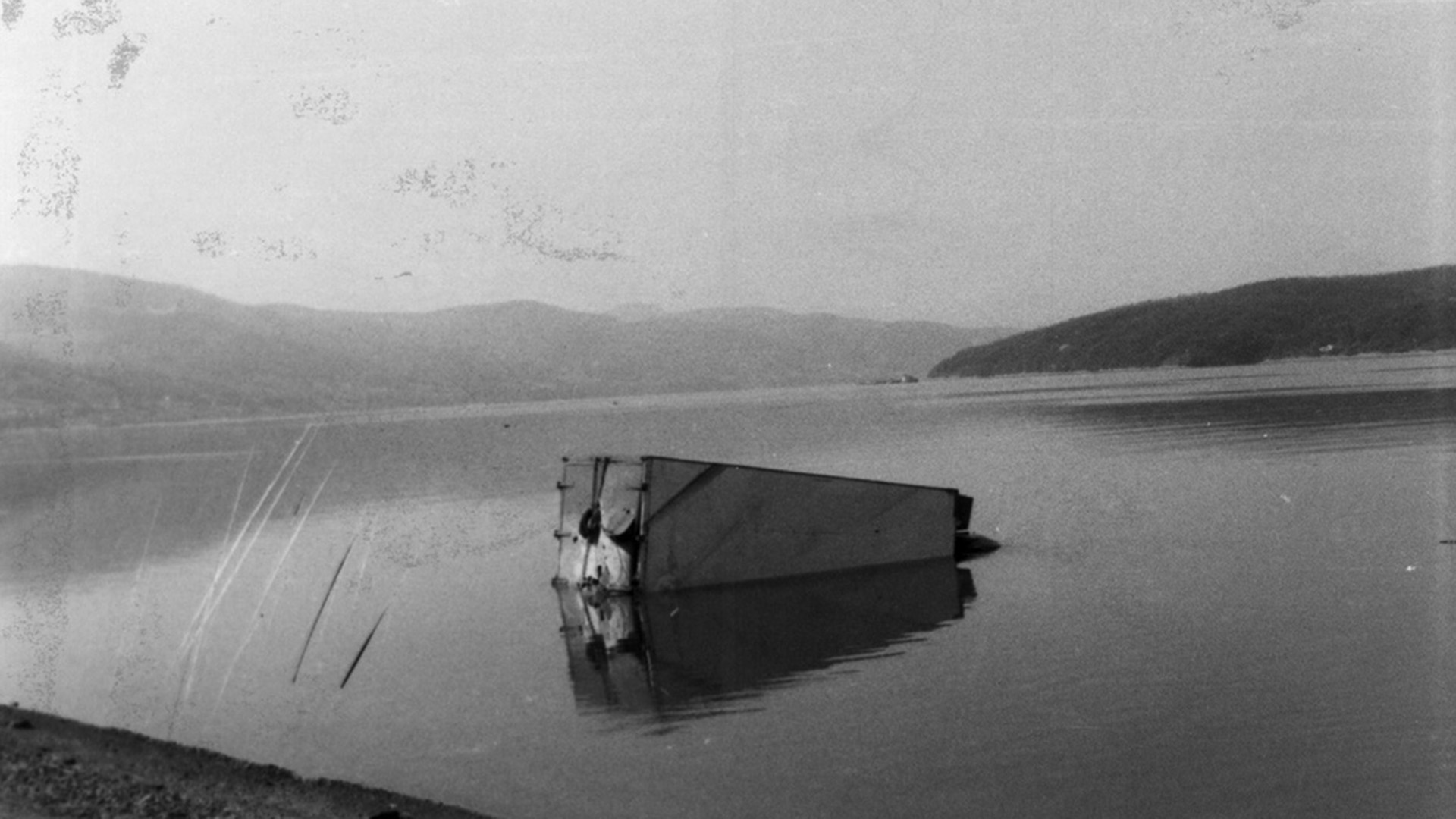
In early April, a refrigerated truck with the marking of a slaughterhouse from Prizren surfaced in the Danube, at the village of Tekija near Kladovo. According to Đorđević, the diver, there was no driver in the truck, but a 5 kg rock was placed on the accelerator pedal and dead bodies could be seen in the freight compartment. The refrigerated truck was hauled ashore by the crane brought from the Đerdap hydro-electric power plant in the presence of police officers from the Kladovo police station (OUP Kladovo).[footnote]Dossier: The cover-up of evidence of crimes during the war in Kosovo: The Concealment of Bodies Operation, p. 35 [/footnote]In the days to come, chief of the Bor Police Department (SUP Bor), Časlav Golubović, got involved too. Golubović telephoned Vlastimir Đorđević, head of Interior Ministry’s Public Security Service (RJB), who first ordered for the bodies to be buried and then, when it was clear that there was no logistics to execute the task, to transport them to Belgrade.[footnote]Dossier: The cover-up of evidence of crimes during the war in Kosovo: The Concealment of Bodies Operation, p. 36[/footnote]Local utility company named Komunalac was hired to do that and driver Ljubinko Ursuljanović was ordered to drive the truck with 30 bodies to Bubanj Potok, where the officers of the State Security Service (DB) would take it over. The next day, Interior Ministry’s driver Božidar Protić came and drove away the truck with 53 corpses and three heads to the “13th May” centre in Batajnica. The operation of removing the bodies from the refrigerated truck and their transportation to Batajnica was named the Depth II and 83 corpses and three heads are the first remains of Kosovo Albanians driven to the mass grave in Batajnica.[footnote]Dossier: The cover-up of evidence of crimes during the war in Kosovo: The Concealment of Bodies Operation, p. 36-37[/footnote]
On May 8 2001, the then Serbian Interior Minister Dušan Mihajlović formed a Working Group composed of senior police officers, including Dragan Karleuša, Deputy Head of the Crime Police Administration (UKP). The Working Group was tasked with investigating the allegations from the Timočka krimi revija.[footnote]Dossier: The cover-up of evidence of crimes during the war in Kosovo: The Concealment of Bodies Operation, p. 30 [/footnote]The Working Group presented its findings and information on the transportation and burial of bodies in documents titled Information I of May 25 and Information II of May 26 2001.[footnote]Dossier: The cover-up of evidence of crimes during the war in Kosovo: The Concealment of Bodies Operation, Annex 1 and Annex 2[/footnote]It also found that the highest state officials had meetings since March 1999 with regard to the issue of bodies of Albanian civilians. At one of those meetings, Slobodan Milošević ordered the then Interior Minister Vlajko Stojiljković to remove all traces which could lead to any evidence of the crime committed. Stojiljković delegated this task to Vlastimir Đorđević, head of the Public Security Service and Dragan Ilić, head of the Crime Police Administration. Later, in communication with Radomir Marković, head of the State Security Service, Ilić said that he was provided with significant help from Goran Radosavljević Guri[footnote]Dossier: The cover-up of evidence of crimes during the war in Kosovo: The Concealment of Bodies Operation, p. 34[/footnote], at that time in charge of the Training Centre in Petrovo Selo, where two mass graves were found.[footnote]Dossier: The cover-up of evidence of crimes during the war in Kosovo: The Concealment of Bodies Operation, p. 12[/footnote]

In May 1999, at one of those meetings of the highest government officials, Obrad Stevanović, Assistant Interior Minister, wrote down: “No bodies – no crime” and below that “President”, which certainly referred to Slobodan Milošević.[footnote]Dossier: The cover-up of evidence of crimes during the war in Kosovo: The Concealment of Bodies Operation, p. 57[/footnote]
The 13th May suburb is located in the vicinity of Belgrade, on the road to Batajnica, by the Danube. In 1999, this was the location of the Training Centre of the Special Anti-Terrorist Unit (SAJ) of the Interior Ministry’s Public Security Service. It is still active and belongs to the Police Directorate. Eight mass graves with 744 bodies of Kosovo Albanians were discovered there in 2001, which is a figure established by UNMIK Forensics Office.[footnote]Dossier: The cover-up of evidence of crimes during the war in Kosovo: The Concealment of Bodies Operation, p. 11 [/footnote]The mass graves in Batajnica contained the bodies of victims killed between March 24 and May 22 1999 mostly in the municipalities of Suva Reka, Đakovica, Peć, Kosovo Polje, Prizren, Vučitrn, Lipljan, as well as Kosovska Mitrovica, Orahovac, Podujevo, Istok and Dečani.[footnote]Dossier: The cover-up of evidence of crimes during the war in Kosovo: The Concealment of Bodies Operation, p. 13 [/footnote]
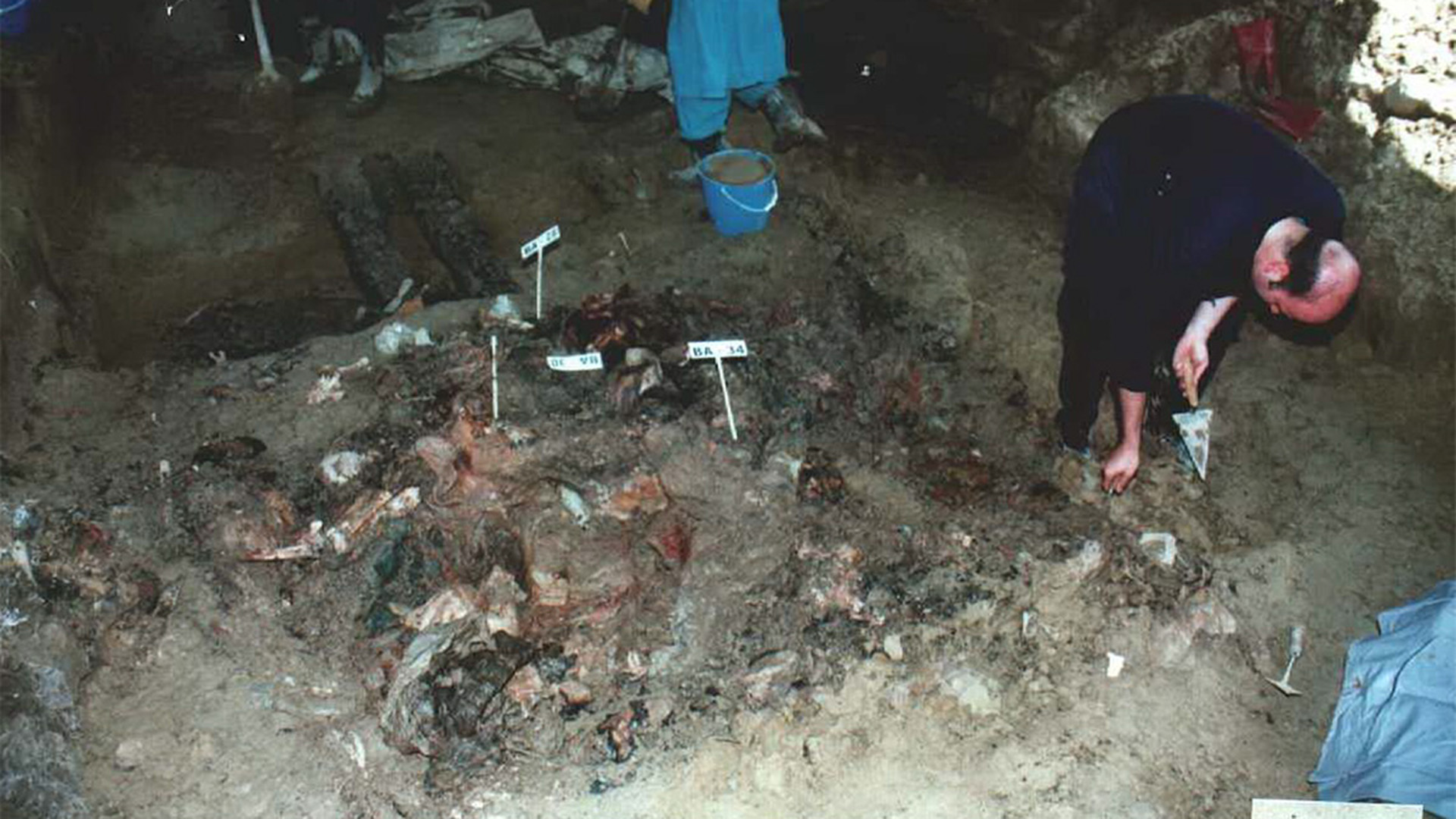
On March 26 1999 In Suva Reka, Prizren municipality, 53 civilians were killed, 49 of whom were members of the Berisha family. 24 bodies of the members of this family were found in Batajnica, five in Suva Reka, while 20 are still recorded as missing.[footnote]Dossier: The cover-up of evidence of crimes during the war in Kosovo: The Concealment of Bodies Operation, p. 14 [/footnote]On the compound of the Berisha family, officers of the Suva Reka Police Station (OUP Suva Reka) separated men from women, who were ordered to run towards the Kalabrija pizza restaurant, in which they subsequently threw bombs and then entered to check whether there were any survivors.[footnote]Batajnica Memorial Initiative, Suva Reka[/footnote]After that, the bodies were loaded into a truck and driven towards Prizren.[footnote]Dossier: The cover-up of evidence of crimes during the war in Kosovo: The Concealment of Bodies Operation, p. 19-20[/footnote]
Bodies of those murdered in the Reka operation were also found in the mass grave in Batajnica. The Reka Operation was a joint action of the Yugoslav Army and Interior Ministry carried out on April 27 and 28 1999 on the territory of Đakovica municipality.[footnote]Dossier: Operation Reka, Humanitarian Law Centre, Belgrade, 2015, p. 7 [/footnote]In Đakovica municipality, at least 348 civilians were killed, 309 of whom were found in Batajnica, 26 in Korenica and Meja, while 13 are still missing.[footnote]Dossier: The cover-up of evidence of crimes during the war in Kosovo: The Concealment of Bodies Operation, p. 18[/footnote]
Petrovo Selo is situated in Eastern Serbia near Kladovo. In 1999, this was the location of the Training Centre for Police Special Units (PJP). It was also sometimes used by the members of the State Security Service’s Special Operations Unit.[footnote]Dossier: The cover-up of evidence of crimes during the war in Kosovo: The Concealment of Bodies Operation, p. 12 [/footnote]According to UNMIK Forensics Office, two mass graves were found in Petrovo Selo, containing 61 bodies.[footnote]Dossier: The cover-up of evidence of crimes during the war in Kosovo: The Concealment of Bodies Operation, p. 12[/footnote]Mass graves in Petrovo Selo contain bodies of people killed in the municipalities of Srbica, Glogovac, Klina and Đakovica after March 28 1999, as well as the bodies of 14 KLA soldiers killed at Mount Beleg in May.[footnote]Dossier: The cover-up of evidence of crimes during the war in Kosovo: The Concealment of Bodies Operation, p. 25 [/footnote]
Brothers Mehmet, Agron and Ylli Bytyqi were also killed at the Training Centre in Petrovo Selo after July 8 1999. The Bytyqi brothers were American citizens arrested in June 1999 for helping the families from Prizren to enter the territory of Serbia. The Bytyqi brothers were sentenced to 15 days in prison in Prokuplje for the illegal entry into the country and then taken to the Training Centre in Petrovo Selo, where they were killed and buried.[footnote]Snežana Čongradin, “Navršava se 20 godina od ubistva trojice braće Bitići”, Danas, 9 July 2019 [/footnote]
The refrigerated truck which surfaced in the Danube some time before was destroyed in Petrovo Selo in early April 1999;[footnote]Dossier: The cover-up of evidence of crimes during the war in Kosovo: The Concealment of Bodies Operation, p. 45 [/footnote]a few days later, the trucks with corpses arrived, first from Janjevo, Kosovo, with 13 bodies, and then from Kosovska Mitrovica, carrying around 50 bodies. Both trucks were driven to the Training Centre by Božidar Protić.[footnote]Dossier: The cover-up of evidence of crimes during the war in Kosovo: The Concealment of Bodies Operation, p. 40-41[/footnote]Božidar Protić testified about the transportation of bodies from Kosovo to Petrovo Selo before both international and national courts.[footnote]Dossier: The cover-up of evidence of crimes during the war in Kosovo: The Concealment of Bodies Operation, p. 28 [/footnote]
Goran Radosavljević Guri, Operational Groups (OPG) commander, as the person responsible for the training of police officers in Petrovo Selo, must have been aware of the burial of the bodies.
The bodies of Kosovo Albanians surfaced in Lake Perućac near Bajina Bašta in Western Serbia in 1999. Later, a mass grave was also found by the lake, which contained, in addition to human remains, parts of the refrigerated truck. Although it was initially thought that these were the bodies of 48 persons, UNMIK Office of Missing Persons and Forensics established that these were the bodies of 84 persons, since not all the bodies were complete.[footnote]Dossier: The cover-up of evidence of crimes during the war in Kosovo: The Concealment of Bodies Operation, p. 12[/footnote]Victims whose bodies were found near Lake Perućac were killed in Đakovica municipality, specifically in Đakovica and Kraljine, and in Dečani municipality, that is, in the village of Dečani.[footnote]Dossier: The cover-up of evidence of crimes during the war in Kosovo: The Concealment of Bodies Operation, p. 28-29[/footnote]
Đorđe Kerić, head of Užice Police Department (SUP Užice), who later testified before ICTY, Bajina Bašta Police Station (OUP Bajina Bašta) and Vlastimir Đorđević, were immediately notified of the bodies found. Vlastimir Đorđević ordered the bodies to be removed[footnote]Dossier: The cover-up of evidence of crimes during the war in Kosovo: The Concealment of Bodies Operation, p. 48[/footnote], and this task was executed using the machinery of the Elektroizgradnja company and the equipment of a local hydro-electric power plant.
In the quarry in the village of Rudnica near the border with Kosovo, 52 bodies of Albanian civilians were found. The excavations started in 2007, but the first bodies were found only six years later, that is, in 2013. The existence of the grave in Rudnica was discovered during the trial conducted in Kosovska Mitrovica, i.e. in the Drenica Group case.[footnote]Dossier: Rudnica, Humanitarian Law Centre, Belgrade, 2015, p. 9[/footnote]The remains of victims killed in Rezala, Srbica municipality and Staro Čikatovo, Donje Zabelje and Gladno Selo, Glogovac municipality, were found in Rudnica.[footnote]Dossier: The cover-up of evidence of crimes during the war in Kosovo: The Concealment of Bodies Operation, p. 29-30[/footnote]Srbica and Glogovac municipalities are parts of the Drenica region.
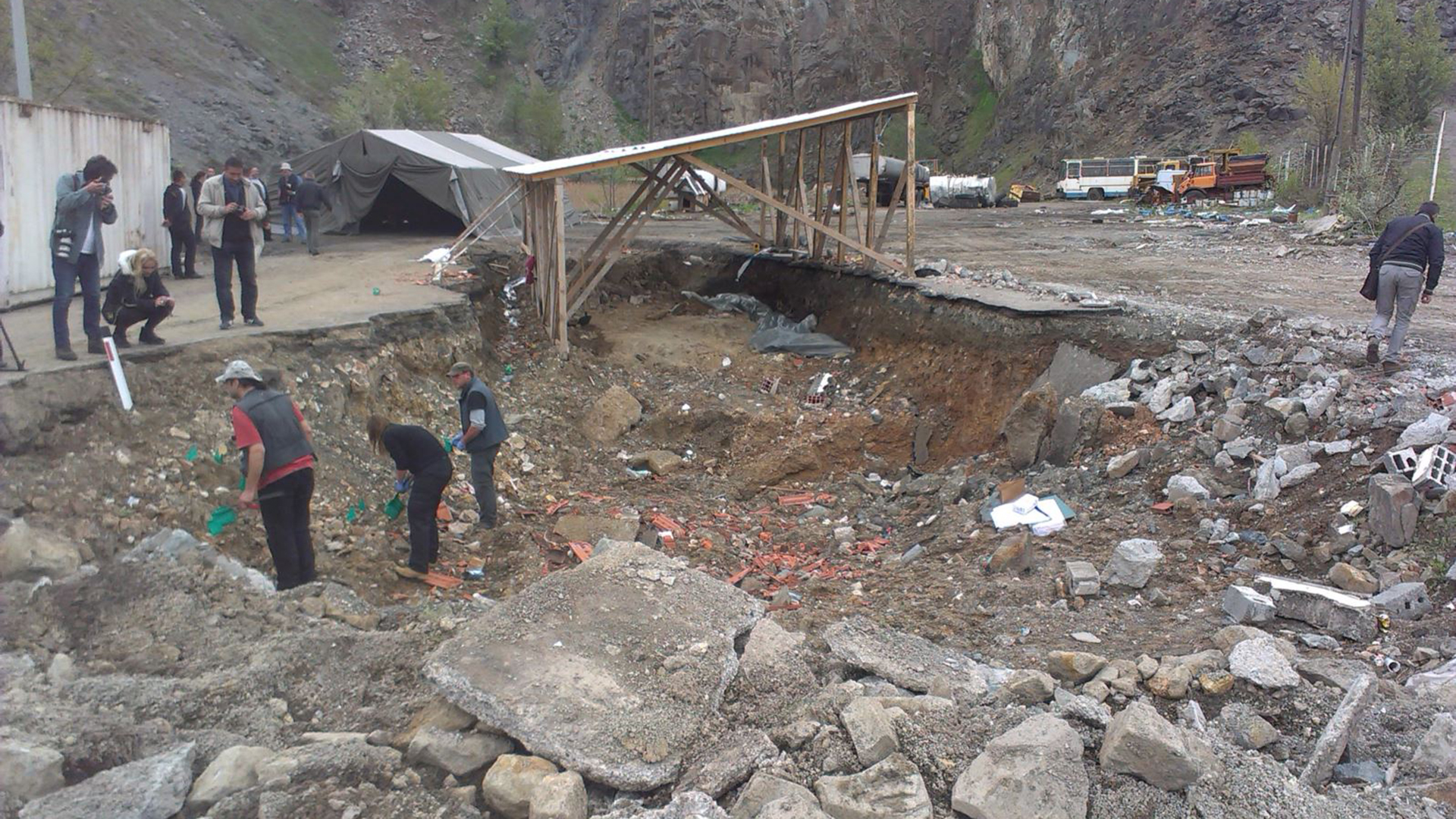
The 37th motorised brigade of the Yugoslav Army, at that time under the command of Colonel Ljubiša Diković, had an important role in the crimes committed in the Drenica region. “The medals and the ‘fame’ that the 37th mtbr achieved after the war in Kosovo are linked to the allegations that Drenica was the ‘stronghold of the KLA’ and the ‘terrorist nest’. However, the fact is that during the deployment of the 37th mtbr in Drenica, some 180 ‘terrorists’, that is, members of the KLA were killed in this area, whereas 1,400 civilians were killed.”[footnote]Dossier: Rudnica, Humanitarian Law Centre, Belgrade, 2015, p. 43-44[/footnote]The Cleaning-up Squad of the 37th mtbr was in charge of removing the bodies found in the Rudnica mass grave after the war.[footnote]Dossier: The cover-up of evidence of crimes during the war in Kosovo: The Concealment of Bodies Operation, p. 51[/footnote]
In addition to buring the bodies in mass graves, there is also evidence of the incineration of the bodies of Kosovo Albanians. Three locations are mentioned in that respect: Mačkatica – aluminium complex near Surdulica, the Feronikl factory in Glogovac and the Bor Mine and Smelting Basin.
According to the information from 2004, the process of incinerating the bodies in Mačkatica in May 1999 was secured by the Red Berets, a state security unit under the command of Milorad Ulemek Legija. Although in 2005 the then War Crimes Prosecutor Vladimir Vukčević visited the factory, no charges were raised.[footnote]Dossier: The cover-up of evidence of crimes during the war in Kosovo: The Concealment of Bodies Operation, p. 53-54[/footnote]There is no indictment for the events in Feronikl, either, although the HLC, based on the manuscript of the book by Slobodan Maksimović, Yugoslav People’s Army officer, had filed a criminal complaint against five NN persons. It is also known that the members of the Police Special Units (PJP) were accommodated in the Feronikl.[footnote]Dossier: The cover-up of evidence of crimes during the war in Kosovo: The Concealment of Bodies Operation, p. 54-55[/footnote]The incineration of bodies in Bor was never examined either, although some witnesses had talked about it, mentioning the name of Časlav Golubović, head of the Bor Police Department.[footnote]Dossier: The cover-up of evidence of crimes during the war in Kosovo: The Concealment of Bodies Operation, p. 55-56[/footnote]
Bodies of the missing Kosovo Albanians were searched for on several other locations in Serbia, as well: the excavations continued in Rudnica and the locality of Brežuljak was examined;[footnote]Jelena Diković, “Depolitizovati proces portage za nestalim licima”, Danas, 31 July 2018[/footnote]the villages of Medevce and Karadak in Medveđa municipality were explored in October 2018 based on the information from the Coalition for REKOM;[footnote]“Komisija: Nema masovnih grobnica kod sela Medevce i Karadak”, N1, 18 October 2018[/footnote]the explorations were conducted in the village of Kozarevo, Novi Pazar municipality in 2015[footnote]N. Kočović, “Nisu pronađena tela Albanaca u Kozarevu”, Blic, 28 April 2015[/footnote], as well as in Kiževik near Raška, where excavations also started in 2015, but were subsequently stopped for the lack of funding, only to be resumed in 2017.[footnote]“Nastavljena potraga za masovnom grobnicom kod Raške”, N1, 19 April 2017[/footnote]Mass graves were not found in any of these locations.
According to HLC and HLC Kosovo data, 1669 persons are still missing in Kosovo, 1100 of whom Albanians, 419 Serbs and 150 others.[footnote]The Fate of the Persons Missing in the 1990s Wars in the Balkans: Obstruction instead of civilisational prospects and a humanitarian dimension, Humanitarian Law Centre, 29 August 2019[/footnote]
In the meantime, the International Commission on Missing Persons developed an On-Line Inquiry Centre[footnote]International Commission on Missing Persons, On-Line Enquiry Centre[/footnote]through which it is possible to report a missing person or a location in which possible mass graves or remains of a missing person could be found.
“First they found Idriz. All of them were in one place in a group, in Batajnica, in Serbia… All found at once. We buried them all. But not all the bodies were buried as a whole. They did not tell us that they are missing… One shoulder of my husband came in 2017. Only my brother in law and his son were told. Nobody said anything to us women. I don’t say that children should be told. I just came back from work and met with a Sokol, a guest, and he received one part. When they told me, it seemed to me as if the whole Kosovo fell on me, it was so difficult.[footnote]Living with memory of the missing – memory book with stories of the families of missing persons from the last war in Kosovo, Forum ZFD, Priština, 2019, pp. 23-24[/footnote]When sixteen potatoes get rotten, you are left without lunch, not to mention sixteen men.”[footnote]Living with memory of the missing – memory book with stories of the families of missing persons from the last war in Kosovo, Forum ZFD, Priština, 2019, pp. 25[/footnote]
A total of 27 Albanian civilians were killed in the village of Staro Čikatovo. The witnesses told the FHC: “In the evening, a few villagers who survived the crime buried the bodies [of the murdered] in the places where they found them, in four graves. These survivors had been hiding in the forest near the village until the Serbian forces retreated from Kosovo. According to their testimony, in early June, the police came to the village and started digging up the graves. The bodies were loaded into a military truck, and the corpses of cows were laid in the dug up graves.”[footnote]Dossier: Rudnica, Humanitarian Law Centre, Belgrade, 2015, p. 34[/footnote]
Obrad Stevanović defended his master thesis titled “Specific characteristics of managing the police units in conducting special criminal investigation and security tasks” in 1999. In 2008, he finished his PhD thesis titled “Specific characteristics of Albanian terrorism in Kosovo and Metohija”. Today, he is a full professor at the University for Criminal Investigation and Police Studies.[footnote]Obrad Stevanović’s biography, University for Criminal Investigation and Police Studies (in Serbian only)[/footnote]
Goran Radosavljević Guri, after the 1990s, became the commander of the Gendarmerie, where he stayed until 2005. The USA banned Guri from entering the country and the US Congress insists on Guri’s arrest and investigation of his responsibility. Serbian President Aleksandar Vučić is simultaneously promising to solve the case and repeating that there is no evidence for the arrest[footnote]Snežana Čongradin, “Navršava se 20 godina od ubistva trojice braće Bitići”, Danas, 9 July jul 2019[/footnote], while Goran Radosavljević remains a member of the Main Board of the Serbian Progressive Party.[footnote]Jelena Diković, “Vučić žrtvuje budućnost Srbije zbog Radosavljevića”, Danas, 20 December 2018[/footnote]
Ljubiša Diković has never been prosecuted for crimes committed in his zone of responsibility. He was posted as Army Chief of Staff in 2011. In February 2015, Dikovic was ordained by president at the time, Tomislav Nikolic, with the Order of the White Eagle of the first degree. This was a result of the increased interest in national and international public for evidence of Dikovic’s potential responsibility for war crimes and covering them up.[footnote]B. Baković, Nikolić odlikuje Dikovića, Politika online, 7.februar 2015[/footnote]Dikovic retired in 2018, after which the current president of Serbia Aleksandar Vucic ordained him with the first degree Order of Karadjordje’s Star, the highest civilian and military decoration.[footnote]Jelena Mirković, Vučić odlikovao Borisova, Dikovića, Tozovca, N1, 15. februar 2019[/footnote]
The evidence of the removal of bodies of Kosovo Albanians was presented in the cases of Đorđević and of Šainović et al. before ICTY and in the cases of Suva Reka and Bitići before the courts in Serbia.
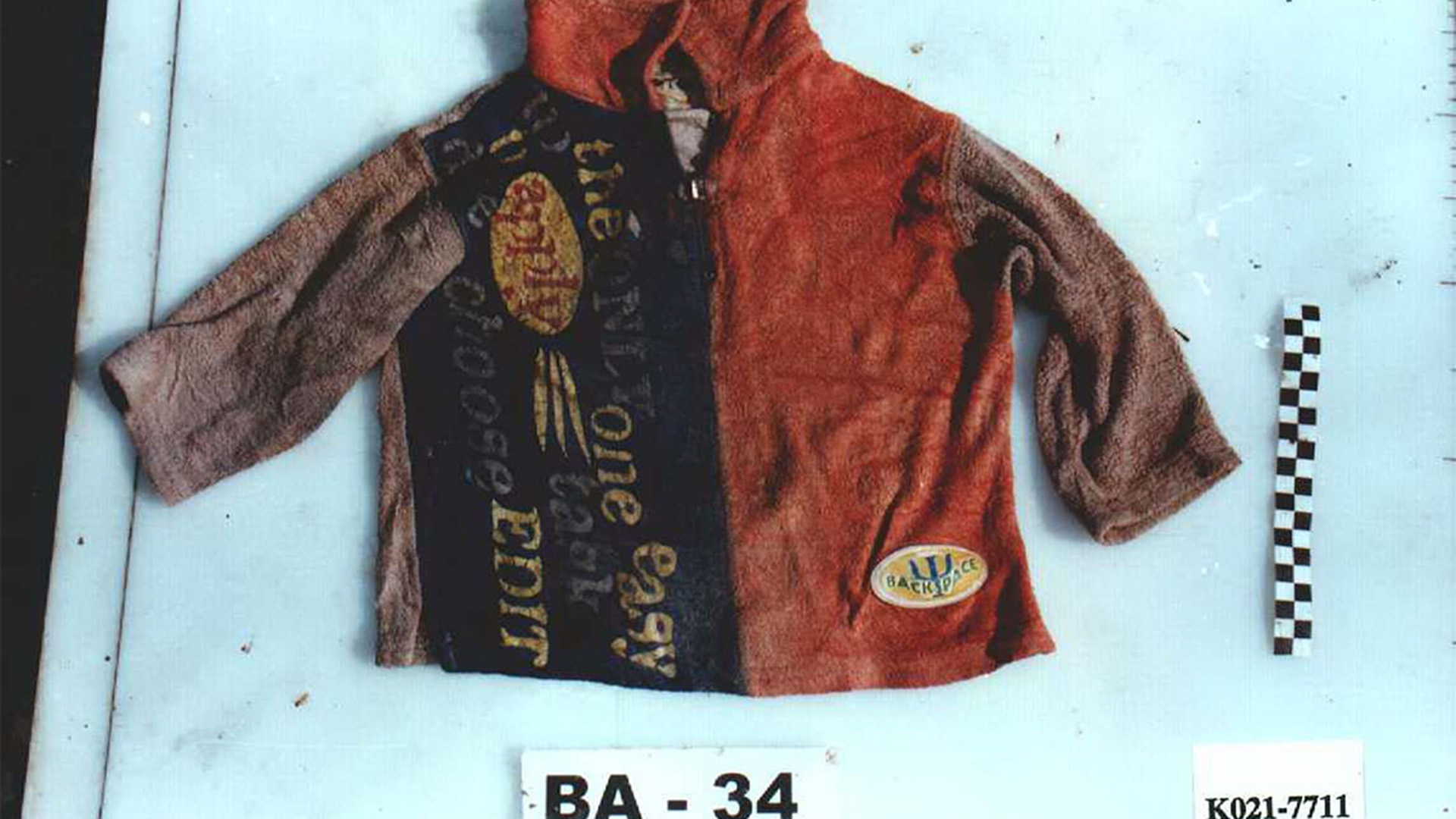
Vlastimir Đorđević, Assistant Interior Minister and head of the Public Security Service was in control of the Police Special Units (PJP) and the Special Anti-Terrorist Unit. He was convicted before ICTY for the crimes against humanity, i.e. deportation, forcible transfer, murder and persecution on racial, religious, and political grounds, as well as for the violation of laws and customs of war. He was convicted for transferring the bodies from Kosovo to Serbia, which was treated as an attempt to conceal the crime of larger proportions, where he is assessed to have played a leading role.[footnote]Appeals Chamber judmgment in the Đorđević case before ICTY, 27 January 2014[/footnote]Đorđević admitted to the burial and hiding of bodies in Batajnica and that he had known about the bodies in Perućac, but sought to minimise his role.[footnote]Dossier: The cover-up of evidence of crimes during the war in Kosovo: The Concealment of Bodies Operation, p. 58[/footnote]According to the judgment of the Trial Chamber, he was sentenced to 27 years’ imprisonment in 2011. The Appeals Chamber reduced his sentence to 18 years in 2014. In 2019, in response to the possibility of Đorđević’s early release, a petition was launched to make his release conditional to the disclosure of other mass graves.[footnote]ICTY: Don’t Release War Criminal Vlastimir Ðorðević [/footnote]Đorđević is currently serving his sentence in Germany.
The accused in the case Šainović et al. before ICTY were Nikola Šainović, Dragoljub Ojdanić, Nebojša Pavković, Vladimir Lazarević, Sreten Lukić, and Milan Milutinović.[footnote]Appeals Chamber judgment in the case Šainović et al. before ICTY, 24 January 2014[/footnote]During the war in Kosovo, Šainović was Federal Deputy Prime Minister of FRY, Ojdanić was Chief of the General Staff, Lazarević was the commander of the Priština Corps and the Third Army Corps of the Yugoslav Army, Lukić was head of the Interior Ministry for Kosovo and Metohija, while Milan Milutinović was the President of Serbia.
On February 26 2009, the Trail Chamber rendered a judgment acquitting Milutinović, since he, as the President of Serbia, was not in direct command of the army and forces which committed crimes. Šainović, Pavković and Lukić were sentenced to 22 years’ imprisonment each for crimes against humanity and the violation of laws and customs of war. Ojdanić and Lazarević were sentenced to 15 years for aiding and abetting deportations and forcible transfers.[footnote]Trial Chamber judgment in the case of Šainović et al. before ICTY, 26 February 2009[/footnote]
In the appellate proceedings, both Ojdanić and Prosecution withdrew their appeals and his trial was concluded; having served two-thirds of the sentence, Ojdanić was released in 2013. After the judgment of the Appeal Chamber, Šainović, Pavković and Lukić were convicted for deportation, forcible transfer and persecutions as the crimes against humanity, murders as the crime against humanity and the violation of laws and customs of war. Šainović was sentenced to 18 years’ imprisonment and the Appeal Chamber approved his early release in 2015. Pavković is serving his 22-year sentence in Finland. Lukić is in Poland, serving his sentence of 20 years. Lazarević, sentenced to 14 years’ imprisonment for deportation and forcible transfer as the crime against humanity, was granted early release in 2015.
In 2009, the Specialist War Crime Department of the Belgrade Higher Court sentenced Radojko Repanović, commander of the police station in Suva Reka and Slađan Čukarić, police officer to 20 years’ imprisonment, Miroslav Petković, reservist, to 15 years’ imprisonment and Milorad Nišavić, State Security Service (DB) inspector to 13 years’ imprisonment for the crimes in Suva Reka, that is, for the murder of the Berisha family members, including women, children, elderly and one pregnant woman in March 1999. Radoslav Mitrović, commander of the 37th Police Special Unit (PJP), Nenad Jovanović, assistant commander of the Suva Reka police station and Zoran Petković, reservist, were acquitted.[footnote]Second instance judgment in the repeated trial in the Suva Reka case, the Court of Appeal in Belgrade, 6 June 2011 [Serbian only][/footnote]
The indictment against Operational Group (OPG) member Sreten Popović and his underling Miloš Stojanović was raised in 2006 for the murder of the Bytyqi brothers. The first instance judgment of the Higher Court in Belgrade was rendered in 2009 and the second instance judgment in 2013. The accused drove the Bytyqi brothers, after they had served their sentences in Prokuplje, to the Training Centre in Petrovo Selo, kept them locked there for several days and then handed them over to the members of the Interior Ministry and Special Anti-Terrorist Unit, who tied them with wire and drove them to the garbage pit that already served as a mass grave with the bodies of Kosovo Albanians. Since it was not proven whether the Bytyqi brothers had the status of the prisoners of war at the time of their execution, the Court of Appeal found that neither Popović nor Stojanović could have committed a war crime against prisoners of war they were charged with, so they were consequently both acquitted.[footnote]Second instance judgment of the Court of Appeal in Belgrade in the Bytyqi case, 18 January 2013 [Serbian only][/footnote]
Memorials for the victims found in mass graves on the territory of Serbia still do not exist. The memory of the victims is kept alive by the street performances of non-governmental organisations such as Women in Black, Youth Initiative for Human Rights, and Humanitarian Law Centre.[footnote]Human rights NGOs mark anniversary of crimes against Albanians, Youth Initiative for Human Rights, 26 March 2019[/footnote]In 2015, HLC launched an initiative for a memorial in Batajnica, for which it is possible to sign an on-line petition.[footnote]Batajnica Memorial Initiative[/footnote]
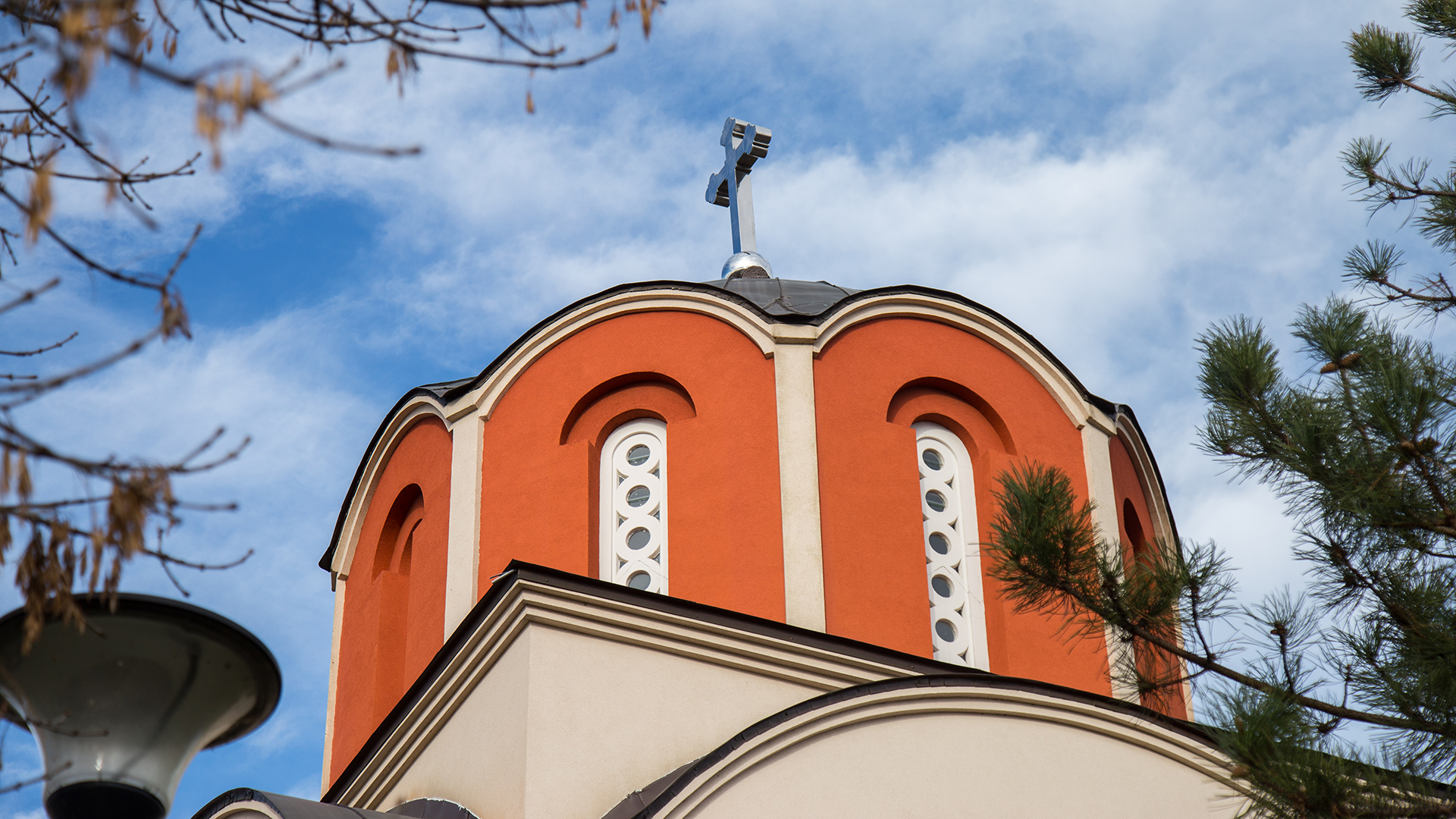
In 2011, in Batajnica’s 13th May suburb, the Special Anti-Terrorist Unit initiated the building of a church dedicated to St Stefan Dečanski. The foundations for the church were dug out by the members of the Unit, for which they were honoured by Patriarch Irinej with the Medal of St King Milutin.[footnote]“Patrijarh odlikovao SAJ i Vulevića za gradnju crkve”, Danas, 10 April 2018 [/footnote]
In 2016, director Ognjen Glavonić made a documentary Depth II in HLC’s production. Thanks to the support of ICTY and HLC, the film presents testimonies of both those who participated in the concealment of the bodies operation and victims’ families.
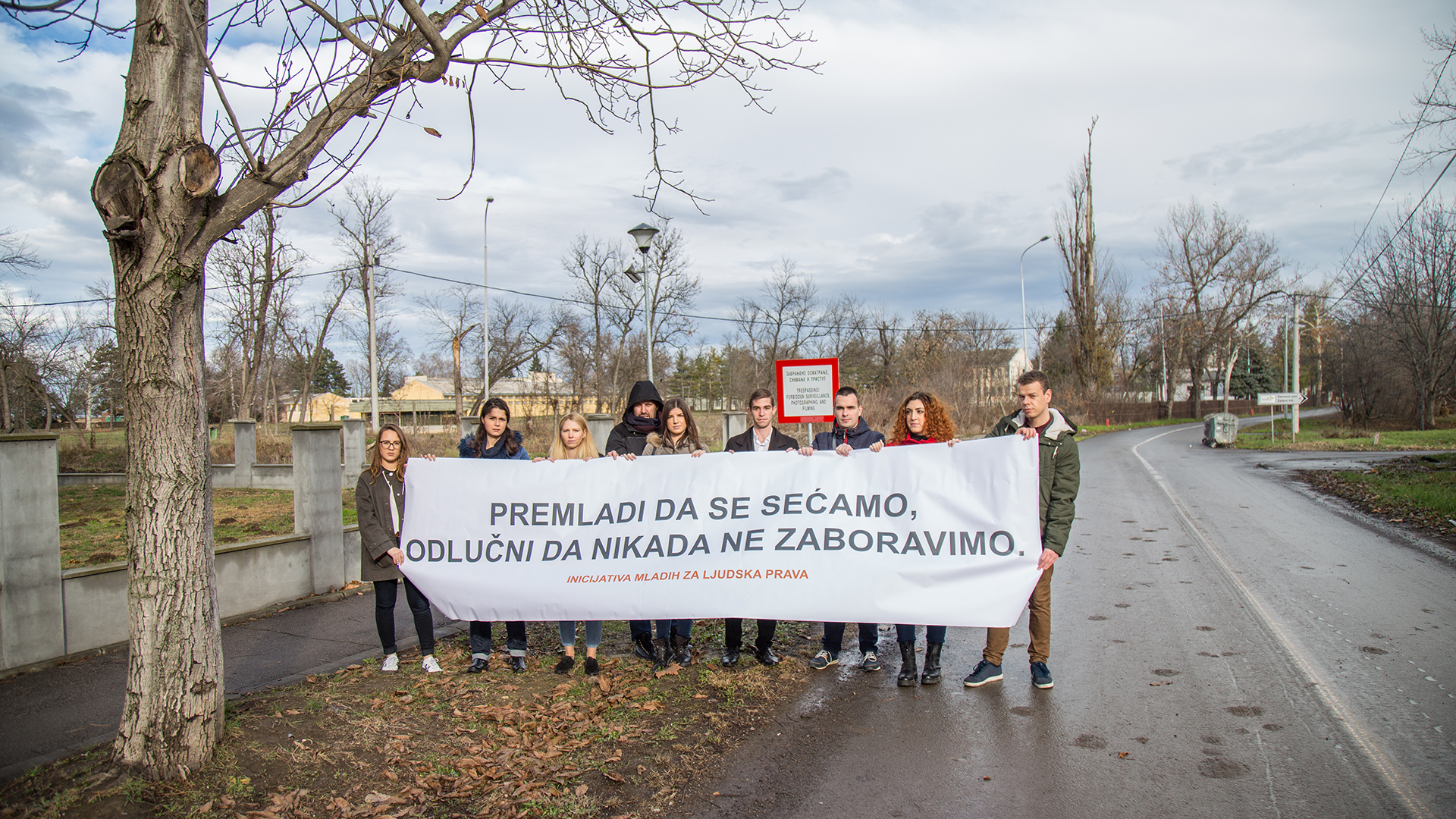
In 2018, the Youth Initiative for Human Rights invited all the lists which participated in local elections in Belgrade to take a stand regarding the building of a memorial site in Batajnica. Out of 24 election lists, only five came out, specifically, the Liberal Democratic Party, the Republican Party, citizens’ group Šta radite bre – Marko Bastać, the Movement of Free Citizens, that is, Saša Janković in his own name, and the Movement for the Restoration of the Kingdom of Serbia. All of them recognised a need for the memorial.[footnote]Stavovi izbornih lista o memorijalu u Batajnici, Inicijativa mladih za ljudska prava, 1 March 2018[/footnote]